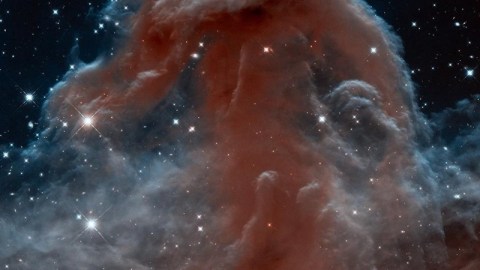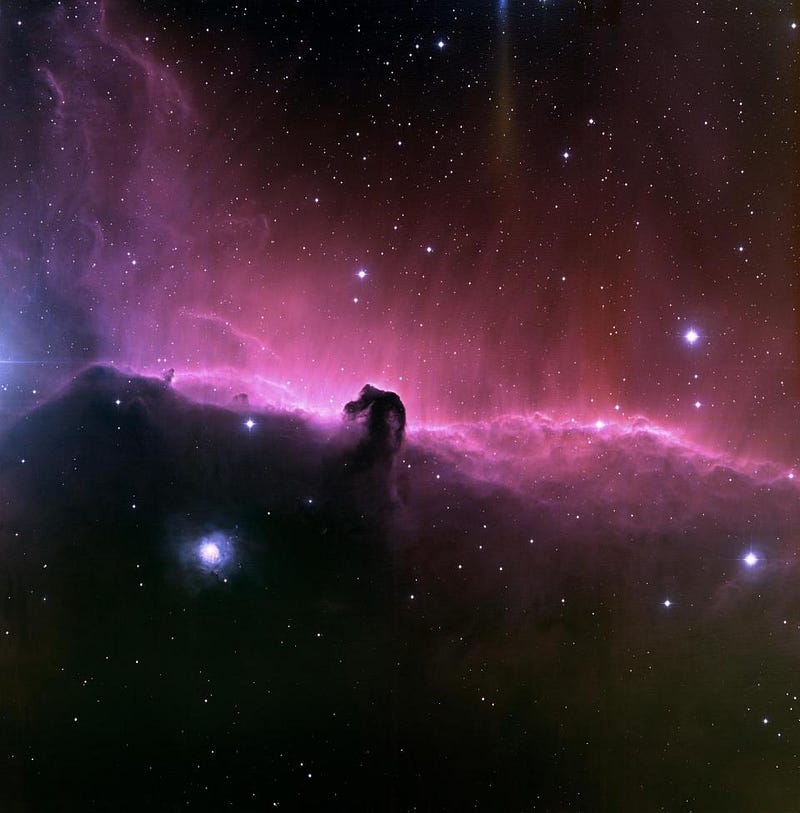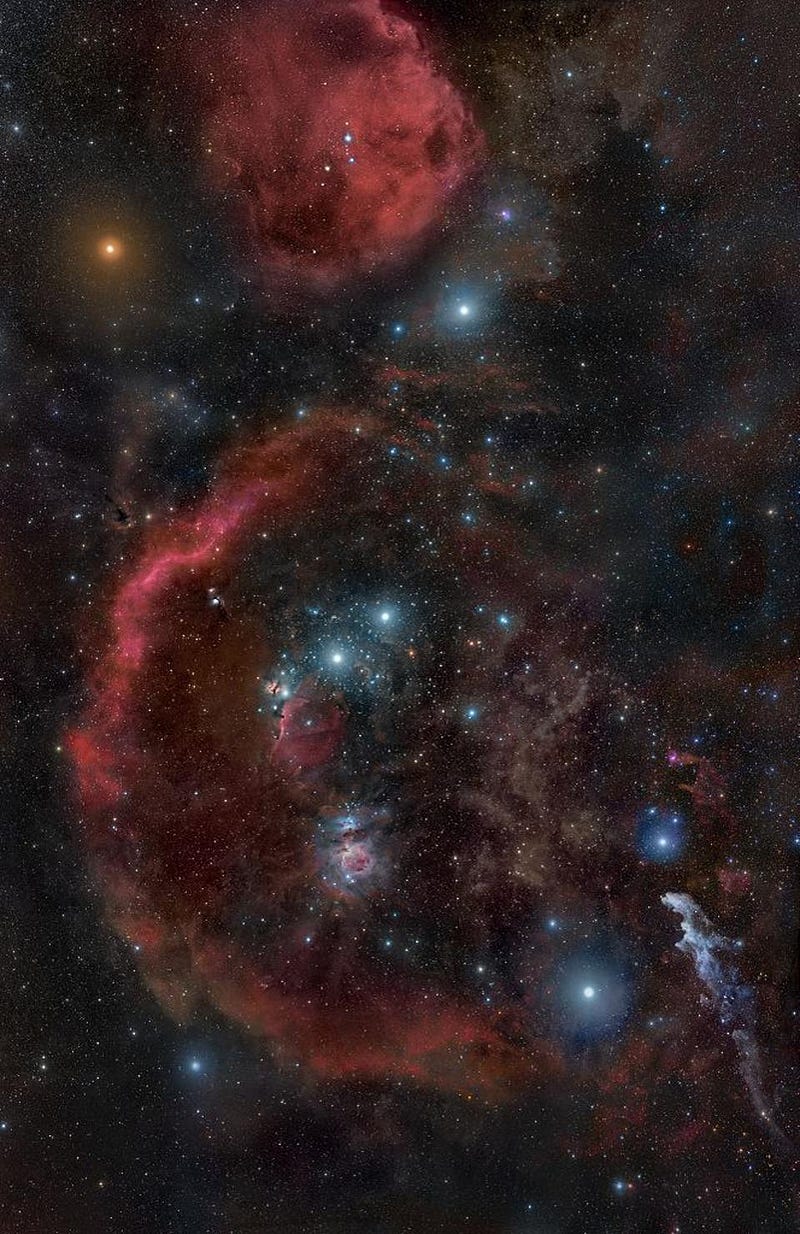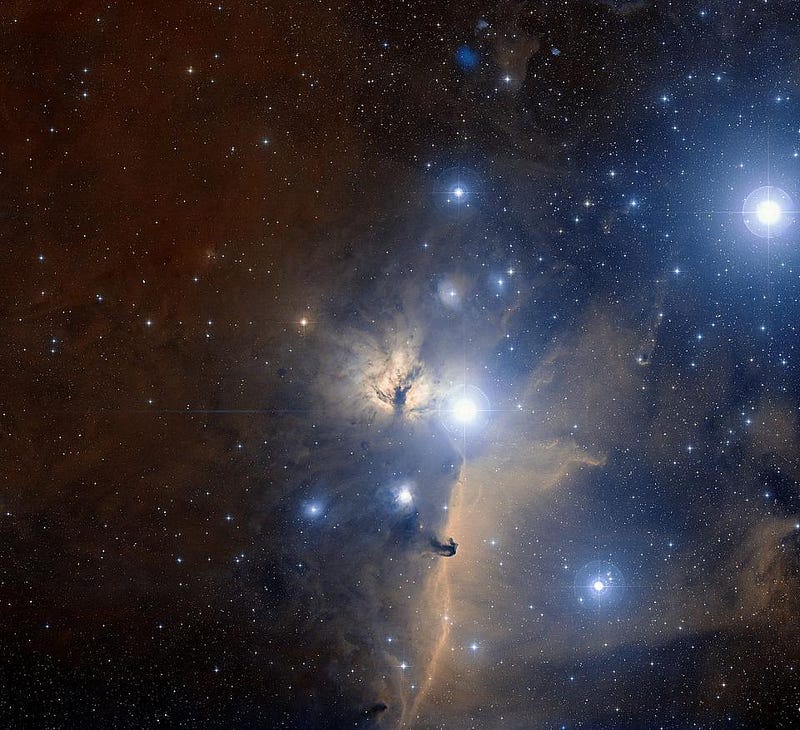Astronomy’s dark horse lit up by Hubble

The dark horsehead nebula isn’t dark at all, but only if you look at the invisible forms of light.
“If you are fearful, a horse will back off. If you are calm and confident, it will come forward. For those who are often flattered or feared, the horse can be a welcome mirror of the best in human nature.” –Clare Balding
The great Orion Nebula might be the easiest deep-sky object to spot, but to telescope-equipped skywatchers, the Horsehead Nebula is even more spectacular.

Located along Orion’s Belt, just south of the easternmost belt star,Alnitak, the nebula is part of the great Orion molecular cloud complex.

From behind the nebula, the brilliant but obscured quintuple star system, σ Orionis, emits intense ionizing, ultraviolet light.

The ionized electrons meet up with free protons, creating the luminous pink glow seen in many emission nebulae.

But the Horsehead itself is slightly closer, with heavily concentrated dust.

This efficiently and effectively blocks the light from both the emission nebula and the stars behind it.

Viewing the nebula in infrared wavelengths, as Hubble did in 2013, reveals an intricate collection of star-forming material.

Low-mass stars are present inside the horse’s head itself, while the base of the nebula showcases bright spots: young stars that are in the process of forming.

With seven times the light-gathering power and the capability to see wavelengths more than 10 times as long as Hubble, NASA’s James Webb Space Telescope, launching in 2018, will peer inside these nebulae as never before.
Mostly Mute Monday tells the story of an astronomical object, image or phenomenon in visuals and no more than 200 words.
This post first appeared at Forbes, and is brought to you ad-free by our Patreon supporters. Comment on our forum, & buy our first book: Beyond The Galaxy!





